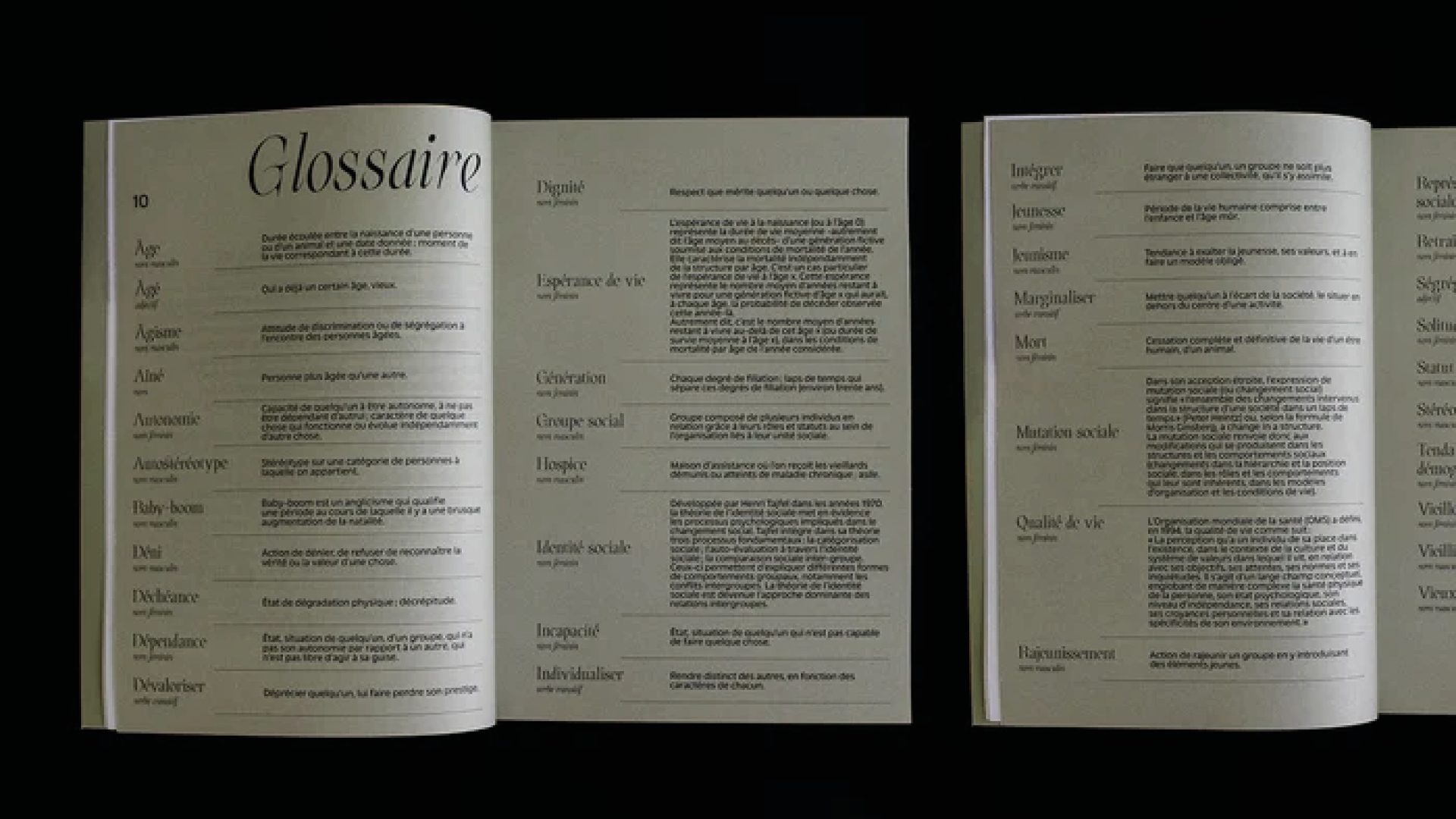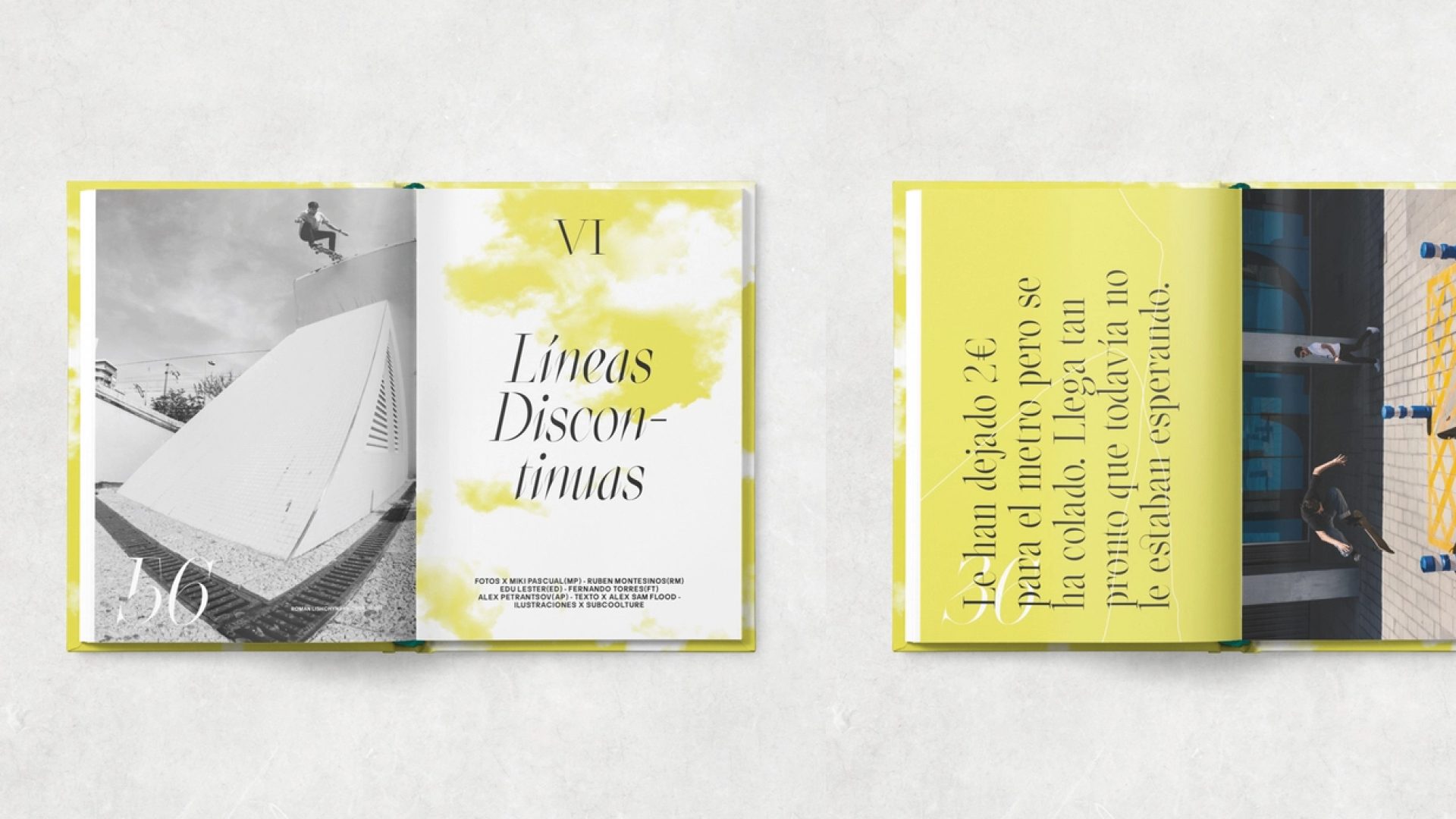
By Sebastien Hayez. Published May 31, 2023
Fonts for Books
Choosing a typeface for publishing is not an easy task. And even though we've already published an entry on font pairing, you need to study a little deeper to be able to make the right choices.
Of course, we offer great rules that work for sure, but it is possible to do it differently: punks can break all the codes, but you have to be careful not to make the whole thing incompatible with its readership.
The golden rule is to take into consideration the content of the publication, whether it is text, with all its compositional finesse, or iconography (pictorial work, photograph, diagram, spreadsheet, map, etc.).
Periodicals: fun & formal
Daily, weekly, monthly or occasional magazine, the layout for periodicals is an exercise in flexibility. Many fixed sections are also living next to voluminous dossiers presented as extraordinary thematic.
Typefaces for headings
It is important to take into account the content of these sections in order to define an identity that will eventually vary only for the sections. The choice of typography must support the general tone of the publication while being relatively legible and discreet. These headings that open the magazine are calls to the eye, not cries in the silence. One or two typefaces are sufficient, and it is possible to play with both within the same title.
Here, the font pairing can be established within the title or between the title and the body text.

NERO, VL9 Photography. License: All Rights Reserved.
Body text
It is advisable to make a perfectly justified typographic selection, in adequacy with the possible richness of the content. Thus, the most important thing is to choose a complete typographic family: roman, italic, bold, small caps, different styles of numbers, etc. It is common to have to compose a text with a few words out of the standard Latin alphabet, even a few mathematical formulas, and there is no question of having to change your typography for a few glyphs at the last moment.
Once you have identified a good, rich and complete typeface, ask yourself the question of legibility and your preferences, serif or sans. Legibility is more a question of habit than of precise theory. Also, it is important to match your audience. Some more experienced people prefer serifs for their legibility in small sizes. Younger people will opt for sans serif typefaces for their more modern look.

https://www.instagram.com/p/Cl6D_mYMUC5/
Sarah Shin. License: All Rights Reserved.
Titles
The cover is the last page of the publication to be designed. It is reserved for the end of the editorial process in order to better reflect the news and to have a better vision of the general tone of the issue.
The choice of the typography composing the name of the publication is a subject apart: although simply typed in daily or weekly newspapers, the typography becomes a logo when design adjustments are made to create a perfect typographic image. Only the placement, usually at the top of the cover, is an almost fixed rule in order to appear correctly on the newsstand shelves.
The numerous taglines present on most publications encourages some designers to keep the same typographic choice as for the headings. For others, the cover is more visible than it is read. So they look for striking typography that's simple enough to be scanned quickly.
The length of these titles sometimes requires the choice of a family available in condensed or compressed width in order to gain flexibility.
Literary edition

Source: Nordlied Nordlied. License: All Rights Reserved.
Body text
Body typeface is generally chosen for all the books in a collection. This choice is the most important one for a publishing house and numerous reading tests with a representative readership are necessary.
The choice of paper also implies that the typography is adapted to the texture which can tire the vision of some readers.
A novel typeface is usually a serif typeface, with a fairly large x-height and open counter-forms to ensure optimal legibility.
Its normal weight is balanced, neither too light nor too fat, at the risk of appearing heavy and invasive, especially if the paper is of poor quality, coarse-grained or too fine.
Think of the stylistic variations, however, since italic and bold are frequently used even in literary texts or poetry. Here, the preference for transparent typography, à la Beatrice Ward, is not a failure, quite the contrary. Just as a good actor does not overact, good typography works for the text.

The visual identity of the magazine is built around the very sharp serif Armag (Blaze Type) and the neutrality of a contemporary Grotesk
Source: vigia.tech Vigia. License: All Rights Reserved.
Title
In English-language publishing, novels or literary texts are less traditional than in European editions. Thus, it is not out of the question to use the cover typeface on the title page or to opt for a more fanciful typeface when composing chapter names. The frequent exchanges between literature and cinema, television series and comic books have influenced the layout of novels: the French pioneers of Club des livres understood this well by composing introductory pages inspired by cinematographic credits: typography becomes an actor quickly unfolding its palette of expression with the aim of plunging the reader's attention into the plot.

Photo: Gina Burri. fas. License: All Rights Reserved.
Cover
Again, the cover is the final task and it can be imagined as a movie poster. In this case, no strict rules are valid, only a few principles can still make sense. The typography must combine expressiveness in accordance with the mood of the book and in adequacy with the readership. However, the reduced format of this type of book does not offer the same freedom as the poster. The overall composition must remain relatively wise in order to be seen and read correctly.

https://www.instagram.com/p/CY1b5AMMnFW/
Art Books
Art books are probably the playground of graphic designers: they offer an interesting balance between literary publishing, wrongly considered too conservative, and periodicals, sometimes perceived as too popular. In fact, each medium influenced the others and the art book sometimes takes on the aspect of a one shot periodical, with light headings and no advertising.
Thus, without going into the details of the typographic choice for the titling or the layout, it is advisable to make a perfectly justified selection, in adequacy with the possible richness of the iconographic and textual contents, while keeping a certain restraint so that the typography is at its service and not the opposite. The work is the content and not the design, or it is an artist's book, but it’s another topic.
Only the cover can have a complete audacity: thanks to its format and the creativity of its illustration, the typography can express itself with the greatest conviction, as well as be discreet to emphasize the content.
When it comes to typographic choices for publishing, don't hesitate to test your layout designs with paper and scale prints. The thickness of the paper, often too thin, is a parameter to be taken into account so that the typographic gray is neither too dense nor too light. These books are made to be read without fatigue over long periods of time. These small details, if neglected, will make your creation a lackluster design.

Source: operative.space License: All Rights Reserved.

Laura Dalex



Source: lisacadot.com License: All Rights Reserved.

For the posters and exhibition publications, design studio Operative Space made a brillant and eclectic use of the Massilia family.
Source: operative.space License: All Rights Reserved.

Designed by Andy Warren. Published by Five Mile.
Zoo is one of the many typefaces used in the pages.

Source: luisb.com Luis B Hernandez. License: All Rights Reserved.